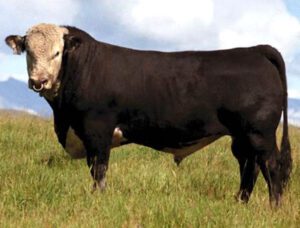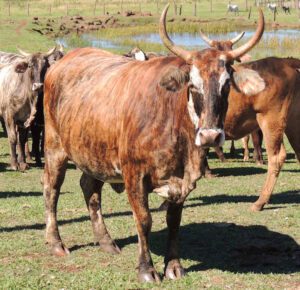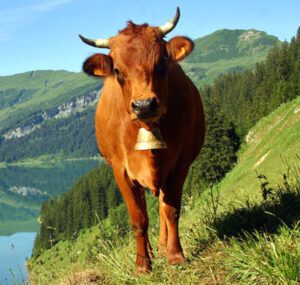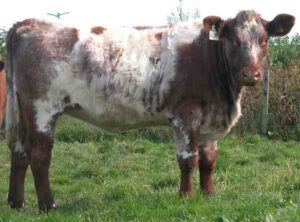The Cachena cattle are a small breed of domestic cattle from Portugal. It is a triple-purpose breed which are raised for milk and meat production and also used for draught purposes.
Along with Protugal, these animals are also bred in Galicia, Spain. And there is also the similar but larger cattle breed available in Portugal which is known by the name Barrosão or Barrosã. Sometimes Barrosã and Cachena are considered different variants of the same breed.
The Cachena cattle were bred from the brown and yellow local cattle breed in Northern Portugal.
The breed was originally bred in the Vila Real District in the past, which is an agriculturally poor district in the extreme north of Portugal. In that area, climate is hot and dry in summer, and cold and humid in the winter.
Little fertile ground is available there. The Cachena cattle breed are distributed around the low mountain range regions of the communities in the Spanish natural park Baixa Limia-Serra do Xurés in the frontier region to Portugal.
In addition they are spread in the region around the Ourensic village Olelas and in the Portuguese Peneda-Gerês National Park. A Cachena Cattle herdbook was founded in 1990. Read some more information about the breed below.
Cachena Cattle Characteristics
The Cachena cattle are small sized animals but not a dwarf breed. They are one of the smallest cattle breeds of the world. They have well proportioned body and big lyre-shaped horns.
They are usually light brown to yellow in color with dark brown nuances around the whithers. Their mucosas are unpigmented except of the dark muzzle. Average height of both bulls and cows is equal or less than 110 cm.

But the bulls are normally taller than the cows. Average live body weight of the mature cows is around 390 kg. And the mature bulls on average weight around 550 kg. Photo and info from Wikipedia.
Uses
Cachena cattle were originally a triple-purpose breed. But today, they are used mainly for meat production. Their meat is of excellent quality and the cows are also good for the production of milk.
Special Notes
The Cachena cattle are very hardy animals and they can live on poor granite soil. They are actually a very rustical breed and excellently adapted to their local environment.
In most cases, these animals are kept in the nature in free range grazing system. They have good sense of smell which helps them for searching for rare herbs in the bushland.
Although the Cachena cattle breed was a triple-purpose breed previously, but now it is raised mainly for meat production. And it is known for it’s excellent beef quality.
Along with quality meat production, the breed also produce a little amount of milk. Their milk is of markedly good taste mainly because of the wild herbs of the range and quasi perfumed.
The Cachena cows are excellent mothers and they treat their calves exemplarily. Their small height may be an adaption to the hostile environment because a small cow needs less energy and survives starving periods. However, review full breed profile of the Cachena cattle in the following chart.
| Breed Name | Cachena | |
| Other Name | None | |
| Breed Purpose | Milk, meat and draught | |
| Special Notes | Hardy, strong, good milk quality, good for meat, excellently adapted to the local environment, good for draught work | |
| Breed Size | Small | |
| Bulls | Around 550 kg | |
| Cows | Around 390 kg | |
| Climate Tolerance | Native climates | |
| Coat Color | Light brown to yellow with dark brown nuances around the whithers | |
| Horned | Yes | |
| Milk Yield | Poor | |
| Rarity | Common | |
| Country/Place of Origin | Portugal |






